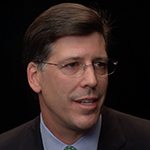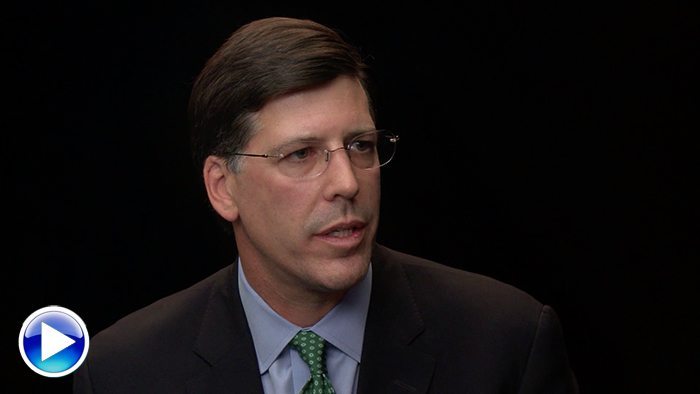CFO Dilemma: Being Disciplined Outside The Box
Morgan Stanley Real Estate’s Michael Levy has overseen a significant transformation in the platform’s reporting. The CFO shares his thoughts on a number of critical topics.
Transcript Download Transcript
The CFO Dilemma: Thinking Outside The Box With Disciplined Focus
With Michael Levy of Morgan Stanley Real Estate Investing
Zoe Hughes, Privcap:
I am joined today by Michael Levy, CFO and COO of Morgan Stanley Real Estate Investing. Welcome and thank you for joining me.
Michael Levy, Morgan Stanley Real Estate Investing:
Thank you for having me.
Hughes: It’s harder to be a private real estate manager than it has probably ever been. Not just in terms of capital raising or deal flow, but in the actual costs of being a GP. You oversee one of the largest real-estate platforms, globally 35 billion, AUM, a global opportunity fund. You sit on the valuation and risk committees. Looking at your role and at Morgan Stanley, the cost of doing business today, how much more expensive is it to be a GP today than it was previously?
Levy: It’s certainly more expensive today. The world is more complex. Whether it’s a change in regulatory environment that affects your reporting requirements or marketing requirements, or working with investors to address their internal needs and requirements, or the opportunity cost of your team’s time where you need to deploy them in additional areas, or working with outside advisors or consultants of our counsel to develop policies, protocols, and systems—the overall business is more expensive to run.
The flipside of that is an opportunity to be creative and think about your business and opportunities for efficiencies. As the industry has matured over the past 20 years, it grew very quickly pre-financial crisis. Now, we have an opportunity to think about the broader business and look at the change in regulatory environment and build your business model consistent with the current state of the environment.
Hughes: In your particular position, where are you seeing the most demand for your time?
Levy: That changes over time. There’s a broad array of activities. My role in the organization is both COO and CFO, and we have a broad team. Over the past several years, we’ve spent time in the changing regulatory environment to develop systems, processes, and protocols to address those needs. On the regulatory front, which is a broad area, it has absorbed a significant amount of my time and the time of the team in building the business to fit that model.
Hughes: Looking at that regulation and the compliance side of things, how much change has actually undergone at Morgan Stanley? AIFMD, Dodd-Frank? What has been the reality for you?
Levy: Morgan Stanley is not materially different from the rest of the real-estate investment management industry. Certainly, we are a U.S. financial institution with the application of Dodd-Frank to our business, but nonetheless, most of the global regulatory environment that applies to your business applies to everybody’s business.
As you pointed out, the world is dealing with AIFMD currently, which is a European-based regulatory framework that will affect both marketing and reporting. In the press recently, there has been a lot of discussion about FTGA, which affects all global banks and investment managers for their offshore investors. Several months ago, it was Form PF. As the months roll by, the issue is whether it’s old laws that are now being translated into rules that allow you to develop the appropriate protocols, or new rules and laws that are coming into place, the change is consistent and will probably continue for the next several years.
Hughes: You have a huge investor base, very much a global base. When you are marketing funds, have there been new systems to introduce that compliance and regulation have impacted on? Have you had to change the systems in place?
Levy: Sure. We’ve made significant investments in IT. Part of it is regulatory based, part is just thinking about how to do business more efficiently, sharing information with the right people internally, making sure we can meet investors’ reporting requirements. This topic is affecting the GPs. At the same time, LPs globally are thinking about their businesses, their needs for information and their reporting requirements. We’re working with the LP community globally, and our investors specifically, on their needs. At the end of the analysis, there is a lot of system work and IT-based work. We have a tremendous organization that we work with internally.
Hughes: Particularly on the reporting side, there is obviously a big question in terms of outsourcing, the type of IT—do you keep it internal or external? What are your thoughts?
Levy: Having spent a lot of time on this, in the real-estate industry there are certain tools the industry generally relies upon. For example, ARGUS or DYNA, which are pure real-estate tools, and you get to some general ledger tools like Oracle. Beyond that, the industry generally is very bespoke in terms of its needs. Therefore, few off-the-shelf products truly meet the needs of your business. Each of these funds is complex. They have their own waterfalls, their own reporting requirements. In some places, we have had to customize existing information systems and, in many cases, build it from the ground up.
Hughes: Is this part of the need for CFOs and COOs today to be creative, to think outside of the box?
Levy: Our IT colleagues as well. You sit down and talk about the business’s needs, developing consensus on what the needs are. Many people in different parts of the business have different needs. If you’re going to accommodate everybody’s wishes, you’re going to create tools that are somewhat unwieldy. Developing a business rationale for the tools you’re building is the starting point. Working with your IT colleagues so they can understand the business rationale and then take that, program that, and develop tools is a process. It takes time and it takes a village to do it well. Like many of our competitors, we have invested significant capital. It’s not just the real-estate investment management industry. Many organizations have invested a lot of capital in those tools that have turned out to be less useful because, either (a) they are trying to accommodate the needs of too many constituents, or (b) they haven’t included their IT colleagues in the development of those tools.
Hughes: Some people would argue, you’re Morgan Stanley: you have a great resource, you have a bank backing you. It’s easy for you to adapt to change. What advice would you give for the smaller GPs out there as their finance offices and teams look at how they face the challenge of rising costs?
Levy: One opportunity in the industry is to have a dialogue with peers, and, whether those peers are from other smaller or larger institutions, to find opportunities and forums to talk about these consistent problems with the industry. Recently, we have had discussions with various accounting firms and consultants to try to create forums to bring people together to talk about these opportunities. These are not strategic elements of your business and there should be some degree of sharing and open discussion. Ultimately, that will allow all of us to produce information that will be more consistent for our investors and meet their needs.
It’s in all of our interests to spend time together to talk about these issues. Ultimately, beyond that, is to think about your available resources, to bring in the right consultants with some experience in this area, and to try to leverage existing products and customize them for your business. Building from the ground up is quite expensive.
Hughes: One key question is: How do you create scale, yet at the same time keep down cost, at least keep on top of the cost base?
Levy: It is an art. To scale, the ability to manage scale and manage it well is an expensive proposition. It is an investment in the business. You need to look at it as an investment. Ultimately, you seek to build systems with longevity and, over time, you can make appropriate adjustments to those tools so they work for you in a changing environment. As investor reporting requirements change, you need to adopt your business and reporting tools for their needs.
Hughes: Looking at the costs coming forward, we’ve seen a huge amount of compliance and regulation in the last 12 to 18 months. What are your expectations? Will things start to taper off a bit in terms of rising costs and rising demands on the GP?
Levy: It will continue, but it’s less of a surprise. Generally speaking, the basic frameworks, whether it’s the U.S. or Asia or Europe, the general laws surrounding the frameworks have been largely rolled out. The regulations and rules around that are continuing to develop. It is a period of uncertainty right now in many areas, which creates a dynamic where you may not be making the full investment today because you’re not entirely certain where those final rules will develop. It will take several years to move from the world we were in pre-crisis to a world that hopefully will have some sustainability over an extended period. Post-Depression, it took about a decade for the U.S. to redefine the regulatory fabric behind the securities industry. Coming out of this past crisis, that timeframe may not be materially out of line with what may occur, to go from the world we lived in pre-crisis to a steady state that we will take into the foreseeable future.
Hughes: We are not going back, though. Is this the new reality in terms of the compliance and regulation? Is this the new reality?
Levy: Now you’re asking a political question. Huge investments have been made by governments around the world and by organizations, our own organization, in this framework. It is clear that this is the framework we’re going to operate with for the foreseeable future. And, certainly, from our perspective, my advice to others is to understand the world we’re currently operating in and build your business models to be successful in that environment.

